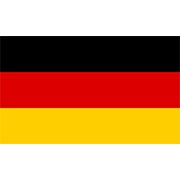Fiscal subject related
A new guide has been published to make B2B e-invoicing in Germany more consistent. It shows how the mandatory information required by the German VAT Act (UStG) can be matched to the European e-invoicing standard EN 16931-1.
The goal is to give invoice issuers, software providers, and service companies a clear reference so that e-invoices meet legal requirements while also following a common technical standard. This helps ensure legal compliance and smooth processing of electronic invoices.
The work is a joint effort between major e-invoicing groups in Germany:
- KoSIT / XStandards Einkauf (xeinkauf.de): responsible for the XRechnung standard,
- FeRD: maintaining the ZUGFeRD hybrid format,
- AWV (Arbeitsgemeinschaft für wirtschaftliche Verwaltung e.V.): supporting the project.
How does the mapping work?
The core of the initiative is a table that links UStG requirements with EN 16931 fields.
Examples:
- Invoice date (§14 Abs. 4 Nr. 3 UStG) → “BT-2 Invoice issue date”
- Invoice number (§14 Abs. 4 Nr. 4 UStG) → “BT-1 Invoice number”
- Supplier’s name and address (§14 Abs. 4 Nr. 1 UStG) → “BG-4 SELLER” and “BG-5 SELLER POSTAL ADDRESS”
For special cases, the guide gives detailed instructions:
- Reverse charge: the phrase “Steuerschuldnerschaft des Leistungsempfängers” should be entered in “BT-120 VAT exemption reason text.”
- Cash-based accounting (§14 Abs. 4 Nr. 6a): use “BT-1 Invoice note” with the text “Versteuerung nach vereinnahmten Entgelten” and add “BT-7/BT-8 VAT point date.”
This ensures every legally required field has a standard place in the structured e-invoice.
Having one clear mapping prevents different interpretations and reduces legal risks. It also makes automation easier.
Future updates are planned. For example:
- Prepayment and final invoices currently need to be attached separately, but structured support is expected in future EN 16931 revisions,
- Additional requirements from Commercial Law (HGB) and payment details will also be added.
In short, this guide is a big step toward uniform and reliable e-invoicing in Germany, with more improvements coming.
Other news from Germany
Germany allows e-invoices in all EU languages during 2025–2028 rollout.
 Germany
Author: Ivana Picajkić
Germany
Author: Ivana Picajkić
Germany will mandate e-invoicing for all B2B transactions between 2025 and 2028, while allowing invoices to be issued in any of the EU’s 24 official languages. This multilingual approach reduces translation burdens, supports cross-border trade, and ensures compliance as long as invoices contain required VAT details, though businesses must provide German translations if requested during audits Germ... Read more



The German Finance Ministry updates its rules on invoice language requirements.
 Germany
Author: Ivana Picajkić
Germany
Author: Ivana Picajkić
On September 17, 2025, the German Finance Ministry (BMF) updated the VAT Application Decree (UStAE) to allow mandatory invoice details to be presented not only in German but also in any official EU language. The update introduces Annex 8 with a multilingual table of approved terms and applies immediately to all open cases, replacing the 2013 guidance. On September 17, 2025, the German Federal Mini... Read more



German VAT Reform – Changes starting January 2026
 Germany
Author: Ivana Picajkić
Germany
Author: Ivana Picajkić
Germany’s VAT Reform, effective January 1, 2026, makes the 7% VAT rate on restaurant food permanent, keeps drinks at 19%, and raises the nonprofit commercial exemption threshold to €50,000. The changes provide long-term stability for the hospitality sector and give charities more room for income generation, but businesses must update systems, train staff, and carefully track classifications to sta... Read more



Germany: Procedure in Case of POS or Cash Register Failure
 Germany
Author: Ivana Picajkić
Germany
Author: Ivana Picajkić
In Germany, if a POS or cash register fails, businesses must follow strict procedures set out in §146 AO, §146a AO, the KassenSichV, and AEAO. The preferred solution is to switch to another TSE-compliant system, but if none is available, continuous handwritten records must be kept, and the outage fully documented with supporting evidence. Read more
Subscribe to get access to the latest news, documents, webinars and educations.
Already subscriber? Login


Germany Published New E-Invoicing Guideline Linking VAT Law to EU Standard
 Germany
Author: Ivana Picajkić
Germany
Author: Ivana Picajkić
Germany has released a new e-invoicing guideline that maps the legal requirements of the VAT Act (UStG) to the EU standard EN 16931, ensuring structured compliance and interoperability. Developed by XStandards Einkauf, FeRD, and AWV, the guideline provides businesses and software providers with a practical tool to guarantee that e-invoices meet all mandatory VAT information requirements. A new gui... Read more



Germany: Deutsche Fiskal Released a New Update of the FCC
 Germany
Author: Ivana Picajkić
Germany
Author: Ivana Picajkić
The latest update of the Fiskal Cloud Connector (FCC version 4.2.2) is now available for download. More information is given as follows. Read more
Subscribe to get access to the latest news, documents, webinars and educations.
Already subscriber? Login


Germany Amends the Application Decree to the Tax Code – AEAO
 Germany
Author: Ivana Picajkić
Germany
Author: Ivana Picajkić
On September 1, 2025, Germany’s Federal Ministry of Finance issued a BMF letter amending the Application Decree to the Tax Code (AEAO), updating rules on bookkeeping, electronic recording systems with TSE, and document retention. The changes align references with the July 14, 2025 GoBD update, ensuring consistency with Germany’s new mandatory e-invoicing system. Read more
Subscribe to get access to the latest news, documents, webinars and educations.
Already subscriber? Login

